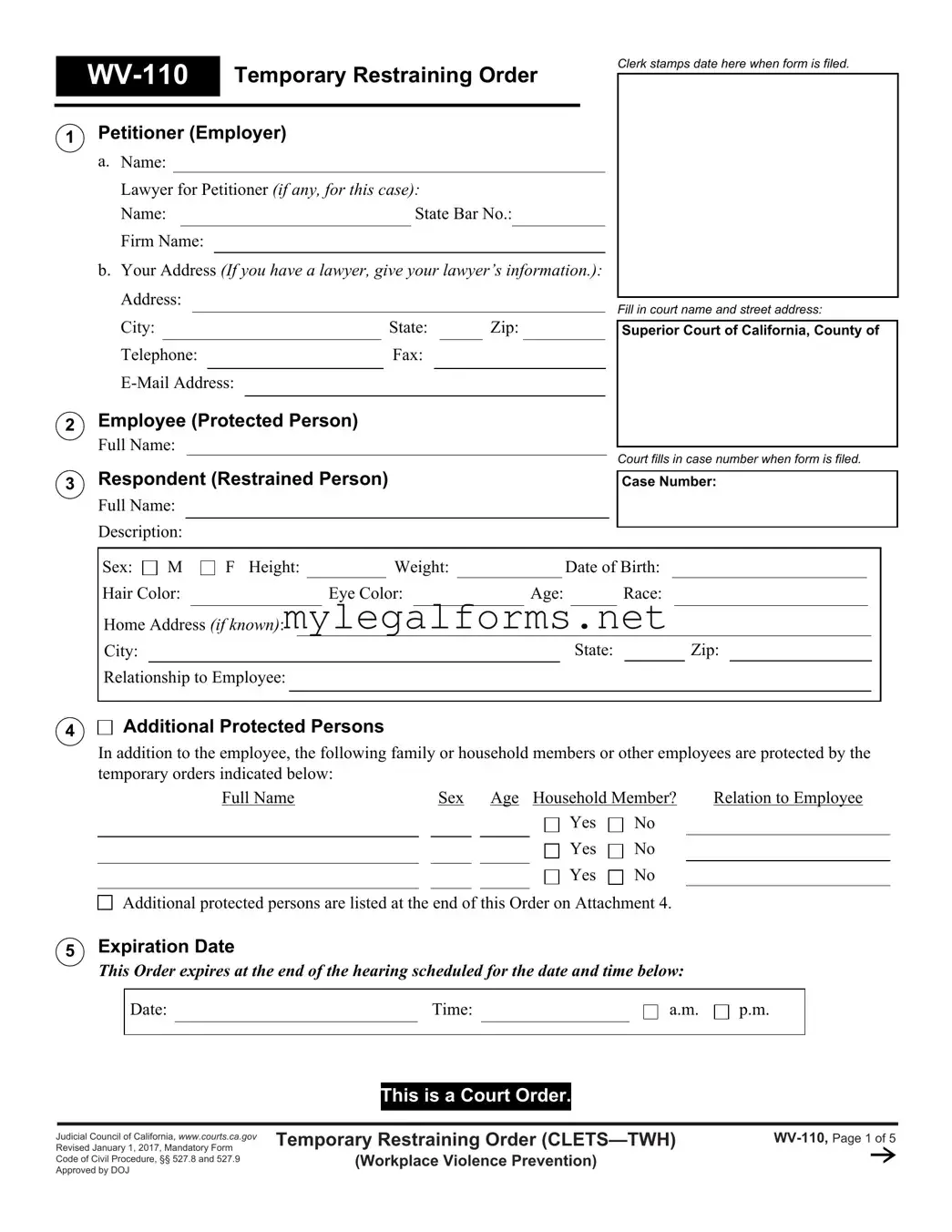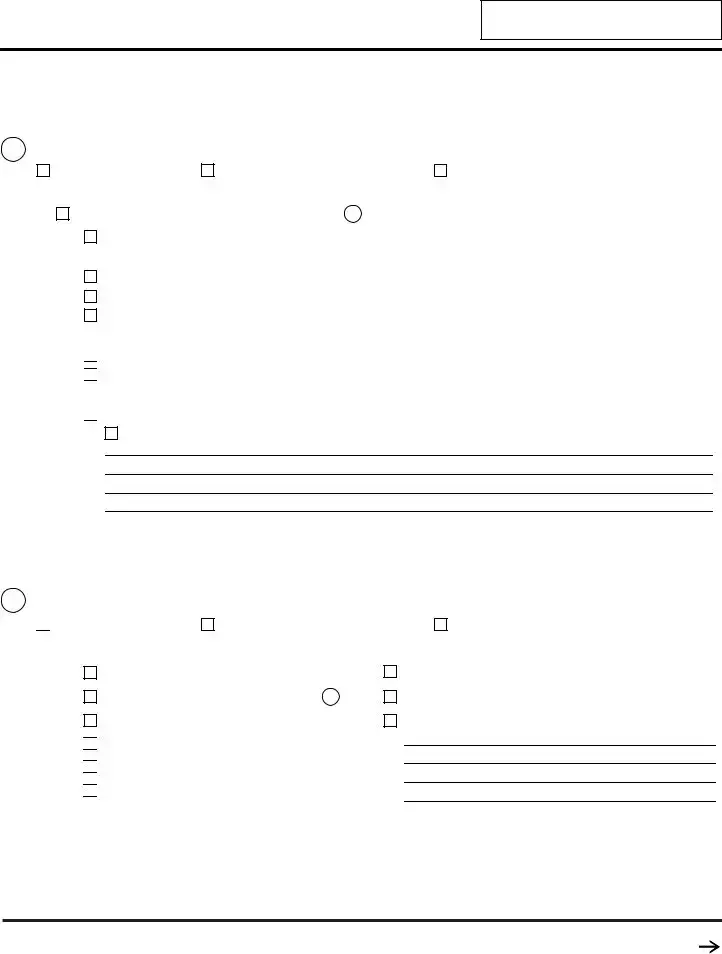Case Number:
12Number of pages attached to this Order, if any: Date:
Judicial Officer
Warnings and Notices to the Restrained Person in 2
You Cannot Have Guns or Firearms
You cannot own, have, possess, buy or try to buy, receive or try to receive, or otherwise get guns, other firearms, or ammunition while this Order is in effect. If you do, you can go to jail and pay a $1,000 fine. You must sell to or store with a licensed gun dealer or turn in to a law enforcement agency any guns or other firearms that you have or control as stated in item 8 above. The court will require you to prove that you did so.
Notice Regarding Nonappearance at Hearing and Service of Order
If you have been personally served with this Temporary Restraining Order and form WV-109, Notice of Court Hearing, but you do not appear at the hearing either in person or by a lawyer, and a restraining order that is the same as this Temporary Restraining Order except for the expiration date is issued at the hearing, a copy of the order will be served on you by mail at the address in item 3 .
If this address is not correct or you wish to verify that the Temporary Restraining Order was converted into a restraining order at the hearing without substantive change, or to find out the duration of the order, contact the clerk of the court.
After You Have Been Served With a Restraining Order
•Obey all the orders. Any intentional violation of this Order is a misdemeanor punishable by a fine or by imprisonment in a county jail, or by both fine and imprisonment. (Pen. Code, § 273.6.)
•Read form WV-120-INFO, How Can I Respond to a Petition for Orders to Stop Workplace Violence?, to learn how to respond to this Order.
•If you want to respond, fill out form WV-120, Response to Petition for Workplace Violence Restraining Orders, and file it with the court clerk. You do not have to pay any fee to file your response if the petition claims that you threatened violence against or stalked the employee, or placed the employee in reasonable fear of violence.
•You must have form WV-120 served on the petitioner or the petitioner’s attorney by mail. You cannot do this yourself. The person who does the service should complete and sign form WV-250, Proof of Service of Response by Mail. File the completed proof of service with the court clerk before the hearing date or bring it with you to the hearing.
•In addition to the response, you may file and have declarations served, signed by you and other persons who have personal knowledge of the facts. You may use form MC-030, Declaration, for this purpose. It is available from the clerk’s office at the court shown on page 1 of this form or at www.courts.ca.gov/forms. If you do not know how to prepare a declaration, you should see a lawyer.
•Whether or not you file a response, you should attend the hearing. If you have any witnesses, they must also go to the hearing.
•At the hearing, the judge can make restraining orders against you that last for up to three years. Tell the judge why you disagree with the orders requested.
This is a Court Order.


 Additional Protected Persons
Additional Protected Persons
 Yes
Yes 
 No
No
 Yes
Yes  No
No
 Yes
Yes 
 No
No
 Enter the workplace of the person.
Enter the workplace of the person.
 Take any action to obtain the person’s address or locations. If this item is not checked, the court has found good cause not to make this order.
Take any action to obtain the person’s address or locations. If this item is not checked, the court has found good cause not to make this order.
 Not Requested
Not Requested
 The employee’s home
The employee’s home
 The employee’s school
The employee’s school
 The employee’s children’s school
The employee’s children’s school
 The court has received information that you own or possess a firearm.
The court has received information that you own or possess a firearm.
 Additional orders are attached at the end of this Order on Attachment 9.
Additional orders are attached at the end of this Order on Attachment 9.

 Additional law enforcement agencies are listed at the end of this Order on Attachment 10.
Additional law enforcement agencies are listed at the end of this Order on Attachment 10. The Order is based on a credible threat of violence or stalking.
The Order is based on a credible threat of violence or stalking. The petitioner is entitled to a fee waiver.
The petitioner is entitled to a fee waiver.
